Bulletin
Making Your Google Docs Accessible
The webteam appreciates the effort that the web authors on campus have made to adopt accessibility practices to ensure that all people, regardless of disability, can have equal access to the information we publish. We also understand that sometimes it seems there are too many hoops to jump through, even when publishing a fairly simple document. And different editing tools can produce vastly different results. To help make it easier, we've begun a campus-wide subscription to the Grackle Docs accessibility plugin for Google Docs.
When you need to post information in a document rather than in a web page, the accessibility of the final product depends a lot on the tools used to create it. If you're starting with a Microsoft Word document, you first create a well structured document: use heading styles to establish the hierarchy, fill in the document properties (especially the title), set up tables with a header row, add alt text to images. Then run Word's accessibility checker on the Review ribbon, fix any issues, and export to a tagged PDF. If you're starting with a Google doc, the first part is the same: create a well structured document as described above, but then the process diverges.
One of the nice things about Google Docs is that you can share the link for people to view the document, and Google's built-in accessibility tools make all of the content available to people using screen readers. However, unlike Word, there is no accessibility checker built into Google Docs so it's hard to know if it's really set up correctly. And if you need to convert the document to a PDF, you're out of luck—Google's PDF exporter creates inaccessible files that can't be shared on the public website.
With our new subscription to Grackle Docs, all of this changes. You can now review the accessibility of your document before sharing it. And once you've finished, you can export it to an accessible PDF. So if Google Docs is your preferred document editor, you can now be confident that your documents will be accessible. Our subscription also covers Google Sheets and Google Slides, so please start using Grackle with those apps as well.
How to Start Using Grackle Docs
Before using this tool, you must first log in to Google Docs using your Oberlin account. At a few points along the way, Grackle will ask for permission to access your files, which is required for it to work.
-
In the Google Docs editor menu bar, select Add-Ons, then Grackle Docs, then Launch.
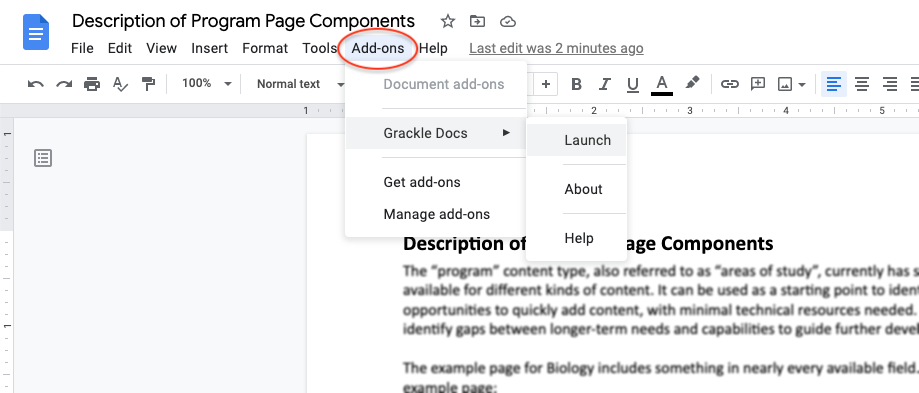
-
In the Grackle Docs tool window, the Accessibility Check tab shows whether the document has passed each check. In this example screen capture, the 'Document title is required' check has failed.
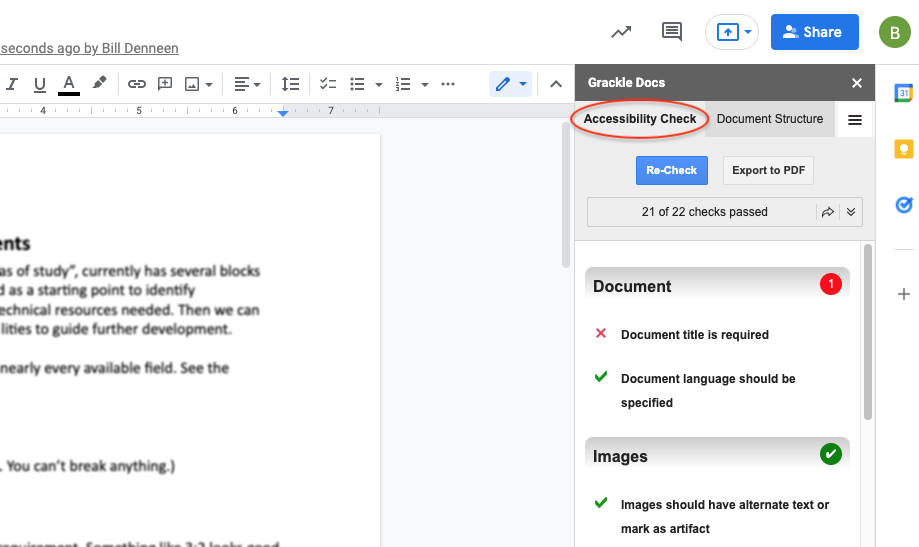
-
The Document Structure tab in the Grackle Docs tool window lists structural elements such as heading 1, paragraph, heading 2, and list.
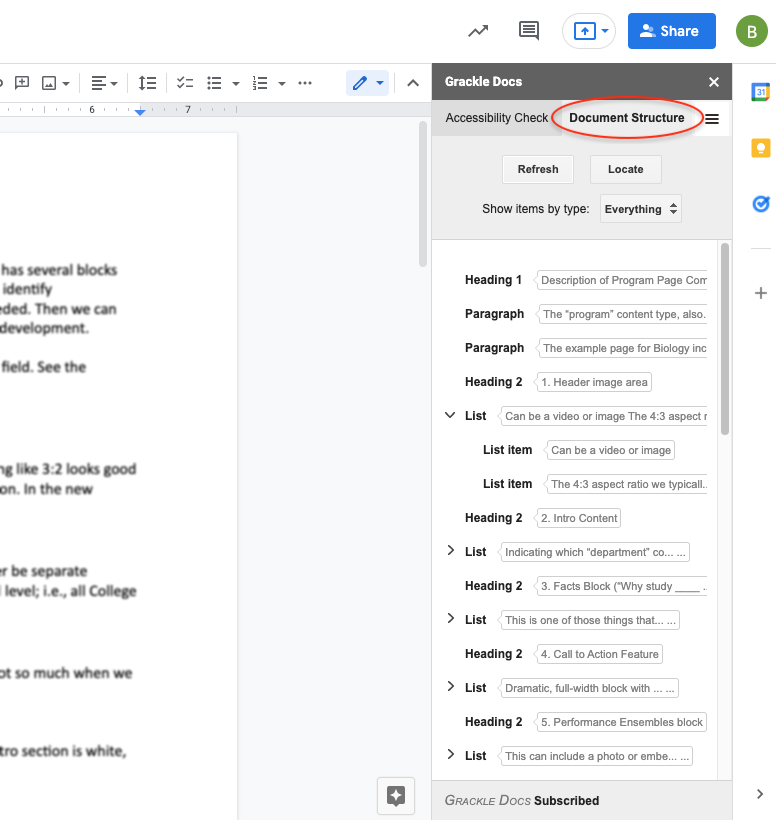
-
Use the 'Export to PDF' button on the Accessibility Check tab.
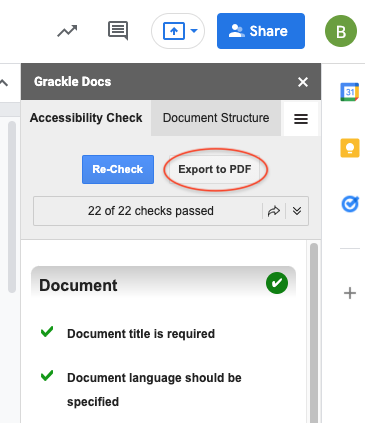
-
In the Progress Monitor dialog box, use the default settings and click Start.
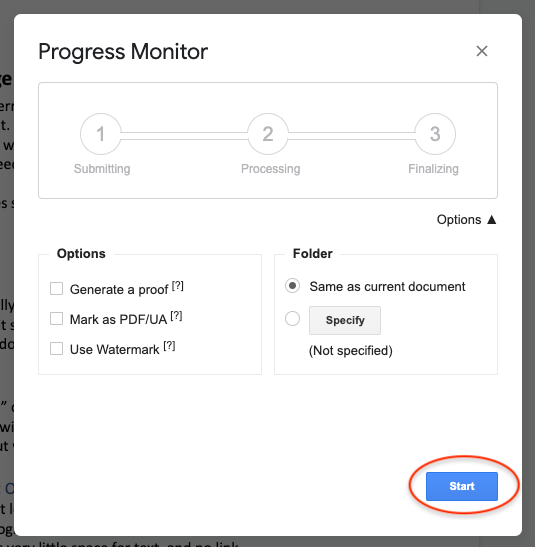
-
When the progress monitor has completed, you can view or download the file.
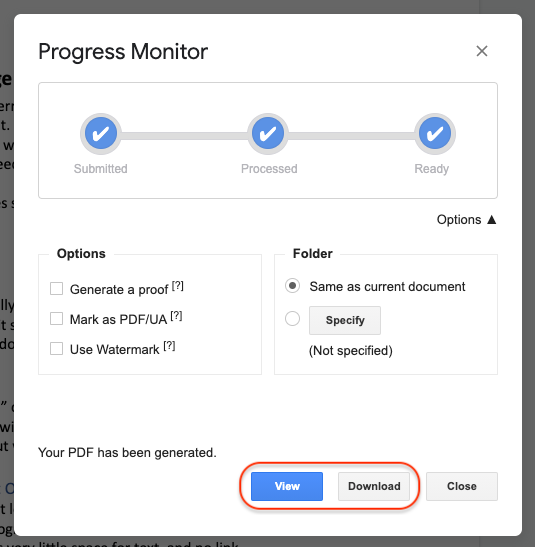
Learn More
Grackle Docs demo (video)
Tables tutorial (video)
Accessibility tip: Avoid images of text
Creating PDFs that everyone can use